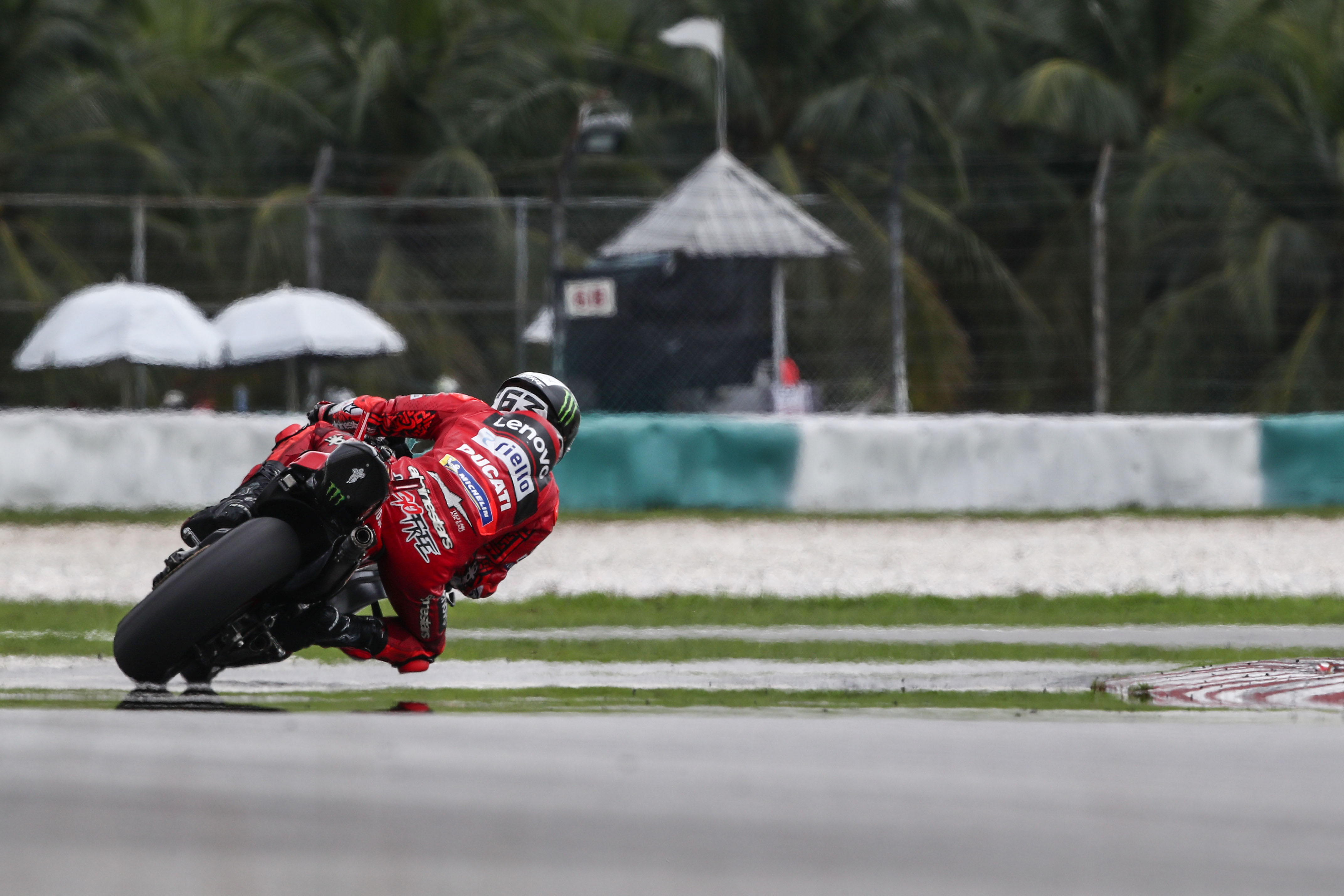Coming into MotoGP’s 2023 season, many already expected reigning world champion Pecco Bagnaia to be the man to beat, such was the strength of his end to last year and the initial positive feedback he and his fellow Ducati riders gave on their new GP23 machine when they first had the chance to trial it when the season concluded last November.
However with the first test of the 2023 season now completed at Sepang, the apprehension many of their rivals might have had about Bagnaia’s hopes of defending his title should have gone from worrying to terrifying, such was the positive mood in which the series new number one plate holder ended his outing there.
It didn’t initially quite look like things would work out just as well as they eventually ended for the Italian, given that his comments after the opening day of testing were rather similar to those of 12 months ago – when teething troubles caused a significant delay to getting his winning campaign underway.
Ducati brought a new model of engine to Sepang last year but that particular engine turned out to be too aggressive for Bagnaia, leaving the factory team with no option but to revert to the midway-spec engine last used in November and leaving the other three GP22 riders (Johann Zarco, Jorge Martin and Luca Marini) on the unliked early 2022 model.
And, after the first day of action this year, it sounded like Ducati was potentially facing a similar issue to last year, with Bagnaia and new factory team-mate Enea Bastianini complaining that on the initial touch of the throttle the engine power was too aggressive to correctly control.
Considering the amount of time spent by Bagnaia and Ducati’s management in the build-up to Sepang talking about how keen they were to correct the mistakes of 2022 by not changing things too much, it’s obvious to see why he sounded understandably a little downbeat after testing got underway.
But that trepidation soon disappeared when the team found the solution to its issue, not with a new engine but simply by working on the electronics to properly dial in a unit that – much to Ducati’s rivals’ dismay – Bagnaia also claims is faster than the previous one.
“I’m happy and proud of the work done,” he explained after testing concluded. “[On day two I was considering the job done of a good level, but today [day three] we were turning around the problem and it was still there in every area.
“But in the last hour, we made a big change with the electronics, we made an enormous step in front, and in that moment it was quite clear in the laptimes. With used tyres, with this changed setting we did 1m59.0s, 1m59.0s, 1m59.0s and everything was solid.
“Until the first exit after lunch [on day three], I was struggling with the [power delivery]. It was very aggressive, very difficult to open full throttle, because the bike was moving a lot, sliding a lot. In that moment, we solved it. We changed it, and it became like using the 2022 bike but with more speed.

“We were already on a good level, and now the next thing will be to try and make another step in front of the 2022 bike in [power delivery], because I think we can reach that level.”
In fact, in the end, he left Sepang with only one minor complaint – that the new machine is lacking somewhat in handling compared to the previous machine – something that comes as fairly expected news given that the bike is now working to control more top speed and acceleration.
But with chassis and swingarm development something that (unlike engines) isn’t locked in spec at the start of the season – and with two more days of testing at Portimao next month to continue to work on the bike – Bagnaia doesn’t sound too worried about the possibility of 2023 starting like 2022 did.
“The only thing that is missing is the handling of the 2022 bike,” he explained, “because it was a bit easier. This bike is more aggressive, but that’s something that we can focus on in Portimao.’






